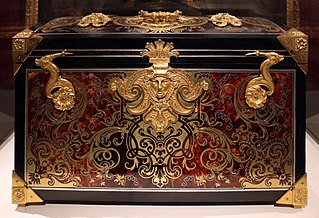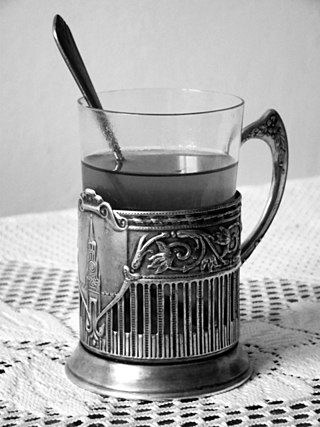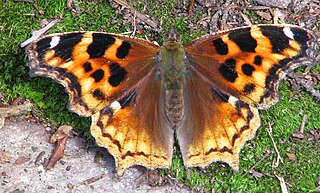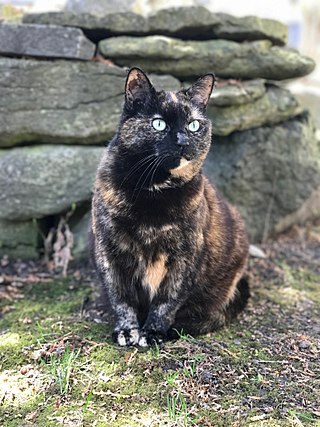
Marquetry is the art and craft of applying pieces of veneer to a structure to form decorative patterns or designs. The technique may be applied to case furniture or even seat furniture, to decorative small objects with smooth, veneerable surfaces or to freestanding pictorial panels appreciated in their own right.

The Nymphalidae are the largest family of butterflies, with more than 6,000 species distributed throughout most of the world. Belonging to the superfamily Papilionoidea, they are usually medium-sized to large butterflies. Most species have a reduced pair of forelegs and many hold their colourful wings flat when resting. They are also called brush-footed butterflies or four-footed butterflies, because they are known to stand on only four legs while the other two are curled up; in some species, these forelegs have a brush-like set of hairs, which gives this family its other common name. Many species are brightly coloured and include popular species such as the emperors, monarch butterfly, admirals, tortoiseshells, and fritillaries. However, the under wings are, in contrast, often dull and in some species look remarkably like dead leaves, or are much paler, producing a cryptic effect that helps the butterflies blend into their surroundings.

The small tortoiseshell is a colourful Eurasian butterfly in the family Nymphalidae. Adults feed on nectar and may hibernate over winter; in warmer climates they may have two broods in a season. While the dorsal surface of the wings is vividly marked, the ventral surface is drab, providing camouflage. Eggs are laid on the common nettle, on which the larvae feed.

A guitar pick is a plectrum used for guitars. Picks are generally made of one uniform material, such as some kind of plastic, rubber, felt, tortoiseshell, wood, metal, glass, tagua, thermosetting plastic or stone. They are often shaped in an acute isosceles triangle with the two equal corners rounded and the third corner less rounded. They are used to strum chords or to sound individual notes on a guitar.

The Angora rabbit, one of the most ancient groups of domestic rabbit breeds, which is bred for the long fibers of its coat, known as Angora wool. They are gathered by shearing, combing or plucking. Because rabbits do not possess the same allergy-causing qualities as many other animals, their wool is an important alternative. There are at least 11 distinct breeds of Angora rabbit, four of which are currently recognized by the American Rabbit Breeders Association (ARBA): the English Angora, the French Angora, the Giant Angora and the Satin Angora. Other unrecognized breeds include the German Angora, the Finnish Angora, the Chinese Angora, the Japanese Angora, the Korean Angora, the Russian Angora, the St Lucian Angora and the Swiss Angora.

Cat coat genetics determine the coloration, pattern, length, and texture of feline fur. The variations among cat coats are physical properties and should not be confused with cat breeds. A cat may display the coat of a certain breed without actually being that breed. For example, a Neva Masquerade could wear point coloration, the stereotypical coat of a Siamese.

The Javanese, also known as the ColorpointLonghair in some registries, is a variety of purebred domestic cat.

A zarf is a holder, usually of ornamental metal, for a coffee cup without a handle.
The Fender Bass VI, originally known as the Fender VI, is a six-string electric bass guitar made by Fender.

The large tortoiseshell or blackleg tortoiseshell is a butterfly of the family Nymphalidae.

Tortoiseshell or tortoise shell is a material produced from the shells of the larger species of tortoise and turtle, mainly the hawksbill sea turtle, which is a critically endangered species according to the IUCN Red List largely because of its exploitation for this trade. The large size, fine color, and unusual form of the hawksbill's scutes make it especially suitable. The distinctive patterning is referred to in names such as the tortoiseshell cat, several breeds of guinea pig, and the common names of several species of the butterfly genera Nymphalis and Aglais, and some other uses.

A tabby cat, or simply tabby, is any domestic cat with a distinctive M-shaped marking on its forehead, stripes by its eyes and across its cheeks, along its back, around its legs and tail, and characteristic striped, dotted, lined, flecked, banded, or swirled patterns on the body: neck, shoulders, sides, flanks, chest, and abdomen. The four known distinct patterns, each having a sound genetic explanation, are the mackerel, classic or blotched, ticked, and spotted tabby patterns.

Nymphalis, commonly known as the tortoiseshells or anglewing butterflies, is a genus of brush-footed butterflies. The genera Aglais, Inachis, Polygonia and Kaniska, were sometimes included as subgenera of Nymphalis but they may instead be treated as distinct genera. See also anglewing butterflies. For other butterflies named tortoiseshells, see the genus Aglais.

A calico cat is a domestic cat of any breed with a tri-color coat. The calico cat is most commonly thought of as being 25% to 75% white with large orange and black patches; however, they may have other colors in their patterns. Calicoes are almost exclusively female except under rare genetic conditions.

Inlay covers a range of techniques in sculpture and the decorative arts for inserting pieces of contrasting, often colored materials into depressions in a base object to form ornament or pictures that normally are flush with the matrix. A great range of materials have been used both for the base or matrix and for the inlays inserted into it. Inlay is commonly used in the production of decorative furniture, where pieces of colored wood, precious metals or even diamonds are inserted into the surface of the carcass using various matrices including clear coats and varnishes. Lutherie inlays are frequently used as decoration and marking on musical instruments, particularly the smaller strings.
Rex Wesley Heslop, was a Canadian businessman noted for being a land developer and residential real estate developer.

Nymphalis vaualbum or N. l-album, the Compton tortoiseshell, or false comma, is a species of butterfly in the family Nymphalidae.

Tortoiseshell is a cat coat coloring named for its similarity to tortoiseshell pattern. Like tortoiseshell-and-white or calico cats, tortoiseshell cats are almost exclusively female. Male tortoiseshells are rare and are usually sterile.
Colours of the Syrian hamster can be described in three ways: as "self", "agouti" or "combinations". Self colours are a consistent coat colour with the same colour topcoat and undercoat. Agouti hamsters have a ticked coat, where each individual fur is banded in different colours. Agouti hamsters also have "agouti markings" which consist of dark cheek markings, a dark marking on the head, and a light underbelly. Combinations are produced when two self or agouti colours are present.

The bow frog is the end part of a stringed musical instrument's bow that encloses the mechanism responsible for tightening and holding the bow hair ribbon. Most of the bow frogs used in today's classical bows are made of ebony; some synthetic bows have frogs made with materials that imitate ebony, while Baroque bows use frogs made with various woods.

















